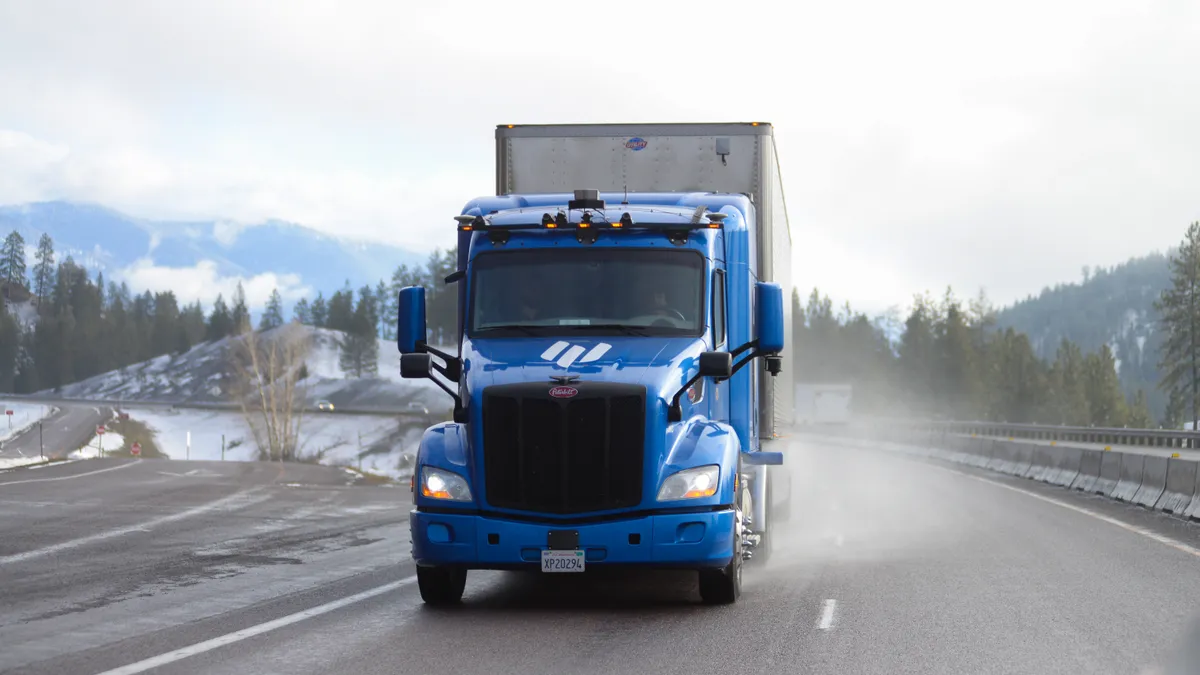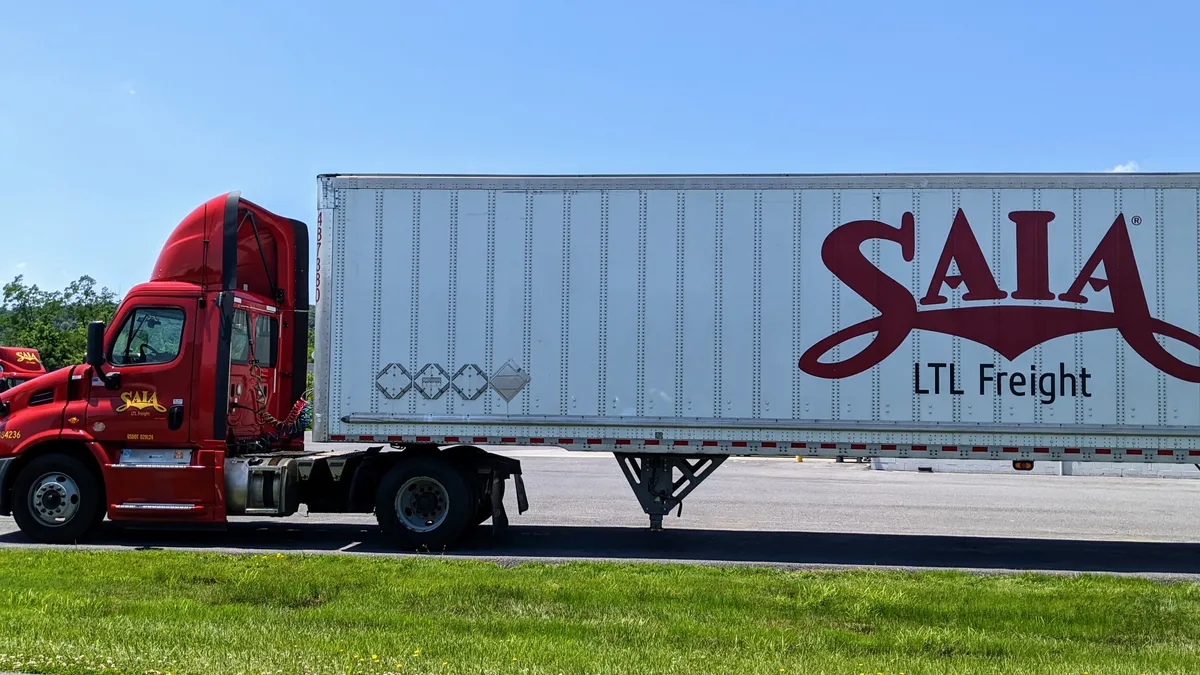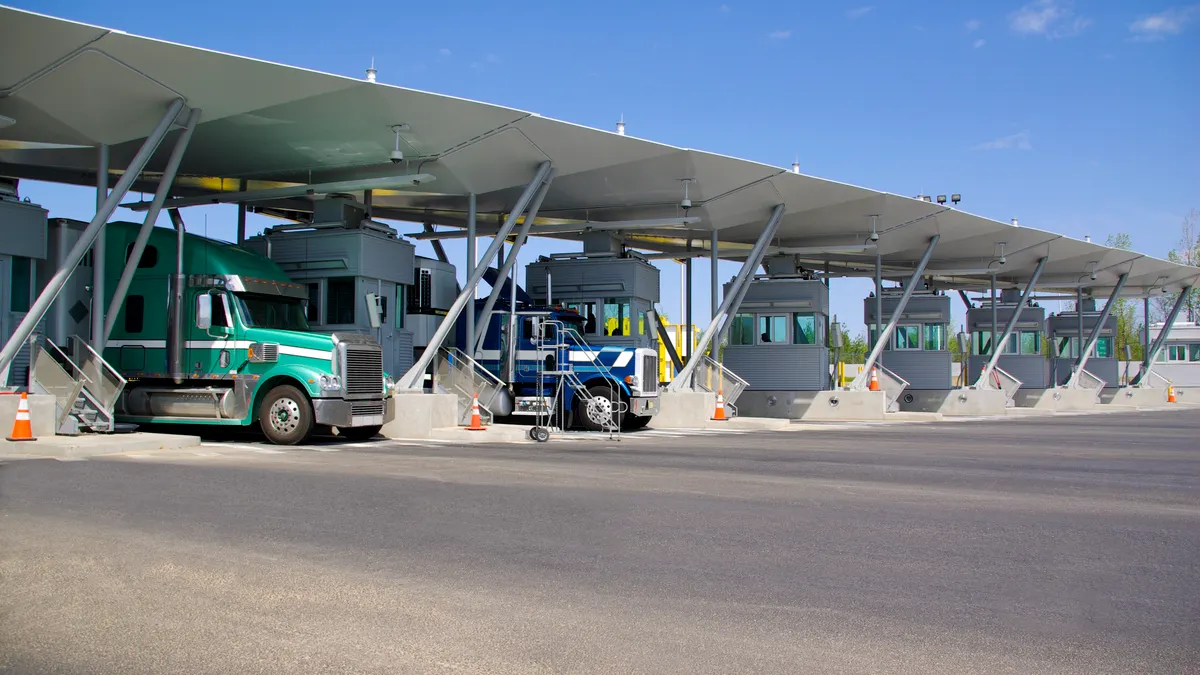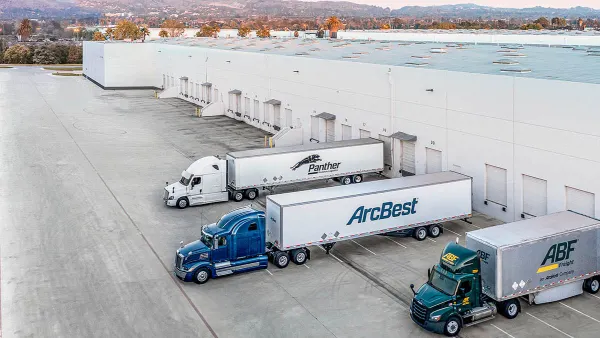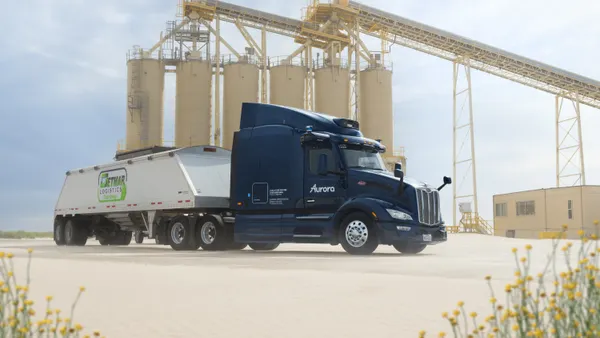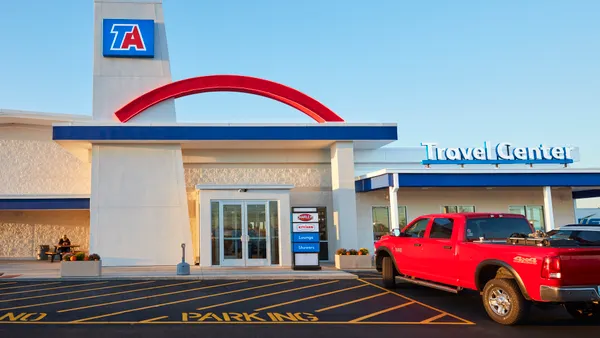As autonomous trucking startups look to scale up, a growing number are conducting on-road safety trials to show regulators and the public at large that AV trucks are safe and ready for larger scale use.
Kodiak's test published last month demonstrated its truck's ability to autonomously pull over to the side of the road in the event of a truck or system failure. Days earlier at Embark, the company published the results of its first on-road testing in snowy conditions.
Daniel Goff, head of external affairs at Kodiak, said tests are key to show people how the technology works and why it's beneficial. Automation, Goff noted, can help eliminate the human error that often leads to traffic accidents.
"Something we get on the public policy side is what happens when the inevitable happens on the road," Goff said. "It's important to show that this is something Kodiak and the industry are thinking about and preparing for. It's part of giving people confidence that these vehicles are ready to be on the road."
Companies aim to prove their tech is road-ready
The publicized tests come as long-haul automated trucking companies are making moves to scale-up their operations.
Embark is conducting tests in preparation for its expansion beyond the Sunbelt region, where its current operations are focused. The company, which hopes to expand operations across the U.S. by 2026, tested trucks through snowy conditions in Montana to illustrate the mapping technology's ability to operate during snowfall, Embark technical product manager Sarah Houts said in an email.
"The regions of the U.S. affected by inclement weather and snow represent a large trucking market that we intend to operate in when we commercialize our technology," Houts said. "We want to test our technology early and often to ensure safe operation in a variety of conditions so we are fully prepared to deploy our technology nationwide."
Kodiak co-founder and CEO Don Burnette told Transport Dive in April that the company is hoping to go commercial with day-to-day operations of its trucks in the coming months, as well as expand its fleet size. The company also hopes to ultimately run trucks without safety drivers, which it has begun conducting on test tracks, Goff said.
For some, skepticism remains
While the results of the tests are a step forward for the AV industry, some observers remain skeptical that the full scope of testing needs for autonomous trucking have been completed, including the removal of the driver. Both Kodiak and Embark had safety drivers in the truck during their recent tests, for example.
Level 4 autonomy, when a car can self-drive but a present human driver can request control of the vehicle, and level 5, when no human driver is present in the car, remain the ultimate goal for many AV trucking companies. Getting there, however, remains a ways off in the eyes of observers like Dan Murray, senior vice president at the American Trucking Research Institute.
"The technology testing that's underway is proving fruitful, we're learning that the technology generally works well, except for snow, rain and fog, but what we haven't done is testing operational environments," Murray said. "Putting a human in the cab, in the driver's seat, is not testing level 4 and level 5 from a functional standpoint in my opinion."
Higher-level driverless testing on public roads is still in its infancy. In December, automated trucking start-up TuSimple completed its first "fully autonomous semi-truck run on open public roads without a human in the vehicle and without human intervention," according to a company press release.
The test was one of the first for the industry, which had yet to see a publicized test of a Class 8 truck operate on public roads without a safety driver.
Another area that remains a concern for Murray as safety trials move forward is the lack of testing around how a truck will operate if it cannot see road and lane markings. Embark's recent test operated in snowy conditions and active snowfall, but Hout noted that lane lines and road markings were visible.
"At the end of the day, if signs can't be read and paint stripes can't be followed, and my Lidar and radar signals are being scattered by precipitation of any form, that's what I want to know what the next step is. Okay I can no longer operate in Level 4 or Level 5, then what's the next solution?" Murray said.


